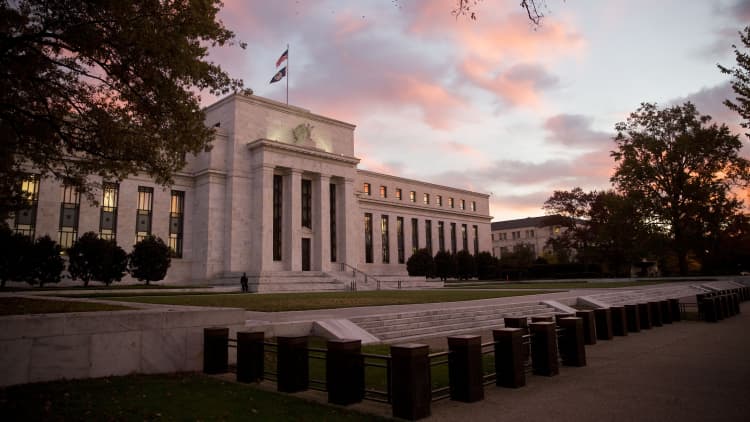
Federal Reserve officials went into the end of the year with a fairly buoyant view on the economy, with lower gas prices, higher holiday spending and employment growth acting as the main catalysts.
In assessments across the central bank's 12 districts, views were largely positive, with most "optimistic" about the outlook, according to the Fed's latest Beige Book report, released Wednesday. Inflation remained subdued, according to most respondents to the survey.
Read MoreTopCEOs tell Congress and Obama to get to work
One of those observations already appears in question, with holiday spending so far not meeting bullish projections.
But gas prices continue to drop and the jobs market is expected to post another month of gains in excess of 200,000 when the government releases its latest nonfarm payrolls count Friday.
The report covered conditions for October and November, a time when financial markets exhibited some turbulence while oil prices tumbled, sending gasoline below $3 a gallon across the nation.
"A number of districts...noted that contacts remained optimistic about the outlook for future economic activity," the report stated. "Consumer spending continued to advance in most districts, and reports on tourism were mostly positive. Employment gains were widespread across districts, and districts reporting on business spending generally noted some improvement."
Read More
Employment gains were reported as "widespread" across the board, with some even reporting "difficulty retaining key workers." Mobility and optimism for being able to find better jobs is a key for employment health. Some districts continued to report problems finding works to fill important positions, though it did not appear holiday hiring would rise significantly from the norm.
Housing remained an area of concern, however, with "a fair amount of variations" reported for various regional conditions.
"Reports on residential real estate activity were mixed. About half of the Districts reported an increase in home sales," the report stated. "Many districts indicated that sales in the multifamily sector were stronger than sales in the single-family sector."
The Fed remains largely in the mode of ultra-easy monetary policy, even though it ended its monthly bond-buying program known as quantitative easing in October. Even with conditions improving, the Open Market Committee has kept the short-term fed funds rate near zero.
While the employment numbers have improved, inflation remains mired below the Fed's 2 percent target rate, enabling it to justify its zero interest rate policy.
Price and wage inflation "remained subdued," while businesses were passing higher health insurance premiums on to employees.


